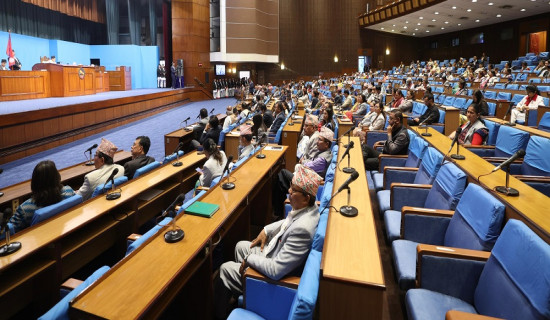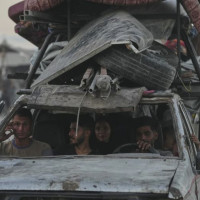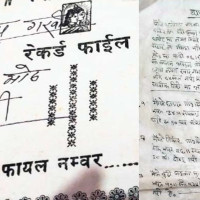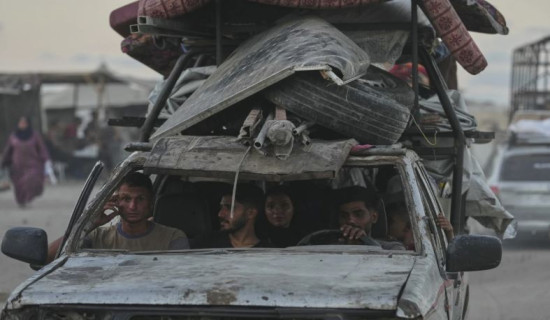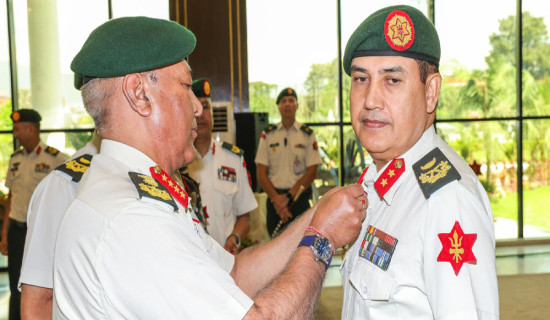- Thursday, 4 September 2025
Religious Tourism For Prosperity
Former President of the United States, Abraham Lincoln, in his address in 1863, said, “The lives of those who attained martyrdom have not gone in vain. There will be a new beginning of liberty in this nation. And the government of the people, by the people, for the people shall be established.” The nearly seven-decade-long revolution and sacrifice-filled struggle of the Nepali people was aimed at laying the roadmap for Nepal’s prosperity and development. It was founded on the desire for the people’s prosperity and the beautiful commitment to a golden future. Change did come by the will of the Nepali people. However, as the aspiration for economic prosperity remains unfulfilled, citizens have not yet instilled trust. The dreams of the martyrs, who sacrificed their lives for the country’s development, prosperity, and the rights of the people, are yet to be realised.
However, there have been some new and positive achievements in economic development. Notable success has been achieved in the development of hydropower. Now, our goal should be religious tourism. The Mahakumbha Mela, held continuously from January 13 to February 26, 2025, in Prayagraj, India, concluded with the sacred Amrit Snan on the auspicious occasion of Maha Shivaratri. According to various Indian sources, over 660 million devotees reached the holy land of Prayagraj within 45 days and bathed at the confluence of the Ganga, Yamuna, and Saraswati Rivers. The extraordinary Mahakhumbha became a subject of global discussion and analysis. When 660 million devotees reached Prayagraj, it greatly relieved India’s economy. It generated revenue in tens of trillions of rupees.
Through the Mahakumbha, Indian Prime Minister Narendra Modi and Uttar Pradesh Chief Minister Yogi Adityanath presented a newsworthy and highly inspiring example of religious tourism. Although India is currently grappling with a serious struggle against terrorism, Prime Minister Modi continues to move forward with determination, aiming to defeat terrorism and guide India towards a new destination of economic, social, and cultural transformation.
During his visit to Nepal, Indian Prime Minister Narendra Modi said in his address, “In every war India has won, the blood of brave Nepali Gorkha brothers has been shed.” Expressing gratitude for his high respect towards Nepal and the Nepali people, a new partnership in religious tourism should now be initiated. The Pashupati Area Development Trust has also conducted the Pashupati Darshan Abhiyan (Pashupati Pilgrimage Campaign) in India to promote religious tourism. Therefore, religious tourism should now become a common agenda to chart a new course of economic prosperity.
Indian Prime Minister Narendra Modi addressed Nepal’s Federal Parliament in 2014, marking a historic moment in bilateral relations. He returned in 2018 for a two-day visit, further strengthening diplomatic ties. Again in 2022, he visited Lumbini, the birthplace of Lord Buddha, on the occasion of Buddha Jayanti, underscoring Nepal and India’s shared spiritual and cultural heritage. These high-level visits reflect the deepening prospects for collaboration, particularly in religious tourism.
“Prayer is when you talk to God. Meditation is when you listen to God. When you meditate, you connect with God. When God dwells within you, life itself becomes meditation.” Nepal, a land steeped in spiritual and cultural heritage, is more than just a country—it is a sacred geography where gods, sages, and seekers have long walked. With its mountains, hills, and plains nourished by rivers like Koshi, Gandaki, and Karnali, Nepal has been a centre of spiritual devotion since the dawn of the Satyayug.
Krite Satyawati jneyā, Tretāmā cha Tapowati.
Dwāpare Muktisopanā, Kalau Nepālikāpurī \\
Himavatkhanda 72.64
This verse speaks of Nepal’s evolving names through the ages—Satyawati, Tapovati, Muktisopan, and Nepal—highlighting its enduring sacred essence. From the Vedic age to today, Nepal has remained a living museum of faith in South Asia. Sites like Janakpur (where Goddess Sita spent her childhood), Kapilvastu (birthplace of Lord Buddha), Muktinath, Mount Gaurishankar, and Pashupatinath Temple draw pilgrims from around the world.
Spiritual bond
Indian Prime Minister Narendra Modi’s deep reverence for Nepal’s sacred soil reflects the profound spiritual connection between the two nations. As Treasurer of PATD, I welcomed him at the Pashupatinath Temple—a moment that symbolised politics and a return to shared roots. His visits to Pashupatinath, Janakpur, and Muktinath were not ceremonial—they were expressions of devotion. In a powerful gesture, a video captured Modi walking barefoot around the sacred pond of Muktinath, reflecting humility and spiritual depth. His presence reconnected India’s leadership with Nepal’s spiritual heart, promoting cultural diplomacy and boosting religious tourism.
Pashupatinath and Muktinath stand as spiritual epicentres; Pashupatinath, regarded in the Shiva Purana as the crown of Kedareshwar, is considered a final destination after the twelve Jyotirlingas. It uniquely blends Shaivism, Shaktism, Buddhism, and Kirat traditions. Both Bodhic and Tantric rituals coexist here, making it a symbol of religious harmony. Similarly, Muktinath converges Vaishnav, Shaiva, and Buddhist beliefs. The rituals of the Aanis (Buddhist nuns) flow with Vedic traditions, symbolising Nepal’s inclusive spirituality. Modi’s observance of these traditions showcased his cultural awareness and respect.
Nepal and India share more than borders—they share gods, scriptures, festivals, and values. Modi’s pilgrimage reaffirms how such spiritual journeys can serve as cultural diplomacy. Pilgrimages can become bridges between civilisations. Path to prosperity through spiritual/religious tourism: Nepal has immense potential for cultural and religious tourism. With its sacred sites and ancient traditions, it can emerge as a global spiritual hub. Promoting this sector strengthens the economy and fosters global goodwill.
Now, a call for inspired leadership is vital. If Nepal’s leaders emulate this fusion of devotion and ethics, it could reignite hope among citizens. A nation rooted in spirituality becomes resilient and self-reliant. With visionary leadership, Nepal can shine as a global beacon of peace, culture, and faith.
Cooperation and possibility
The government led by Indian Prime Minister Modi, now often referred to as Modi 3.0, has prioritised significant progress in science, technology, energy, and security to establish India as a competitive economy. Modi’s third term began with launching initiatives such as space start-ups, venture capital funds, successful satellite launches, and establishing the National Research Foundation. He is currently focused on laying the foundation for new economic prosperity. Campaigns such as Swachh Bharat Abhiyan, Jan Dhan Yojana, Make in India, Digital India, Start-up India, the Goods and Services Tax, demonetisation, and production-linked incentives introduced by his government have gained popularity across India.
In Nepal’s current context, moving forward with fresh thinking is essential. Now, it is only possible through leadership with the capacity to creatively drive development. Therefore, political leadership must stand creatively to awaken society, build the nation, deliver new messages, develop a new political culture, propose new development concepts, and play a humane role in social transformation. While preserving the good deeds of the previous generation and correcting any shortcomings, it is necessary to demonstrate the ability to fulfil the historic responsibility of nation-building with fresh ideas, perspectives, and determination. The coming decade must focus more on religious tourism to achieve this aspiration for prosperity.
(Dr. Thapa is a member secretary at the Pashupati Area Development Trust.)



